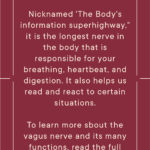Did you know? We feel before we think.
Imagine this: You walk into a party and are introduced to someone. Instantly, you feel something isn’t right and start to feel uncomfortable.
At this moment you’re having a gut reaction. The information is sent up to your brain which takes in details from your senses. Your body, without you realizing or recognizing it, starts to acutely scan the room for threats and ways out. Your listening becomes sharper. Your body is taking in the temperature in the room, while you’re also smelling and tasting. It’s gathering information for the brain to process.
Your felt-sense, or gut feeling, mixed with a combination of sensory information, is then processed in your brain and compared against previously known situations to deliver you an outcome. It’s doing predictive analysis to understand if it should fight, flight, freeze, or fawn. All of this is happening seemingly instantaneously. Our bodies and brains are quick on the draw.

What’s behind this? Meet your vagus nerve.
Your central nervous system starts at the back of your brain, branches down both sides of your neck, and then meets again around the lungs and heart, traveling down to your gut, and branching out to all of our senses and internal organs along the way. The central nervous system (CNS) is also called the vagus nerve, or the vagal nerve bundle, and it works autonomically, meaning, on its own, without a conscious thought from you.
The vagal nerve controls most functions of the body and mind. It has one job: to keep us alive at all costs. (Unfortunately, “at all costs” is what causes pain, discomfort, and chronic illness in our body.)
It consists of two parts: the brain and the spinal cord. The brain is the center of our thoughts, the interpreter of our external environment, and the origin of control over body movement. It takes in information and then executes orders based on previous experiences and the data it has stored.
The vagal nerve is nicknamed the body’s information superhighway because it transmits information back and forth from the brain to the gut, and vice versa. Interestingly, the lanes going both ways are not equal. It’s wired to send only 10-20% of information down from the brain to the gut and 80-90% of the information from the gut to the brain.
Let’s go back to the party.
As soon as you start to feel uncomfortable, your body starts to make adjustments to keep you safe. How you react is based on previous experiences and how you’ve been trained to respond.
If you’ve trained as a people-pleaser, your reactions will mirror the other person, while internally panicking and looking for a pleasant way to get out of the conversation. You might scan the room looking for a friend who might be able to help you out of this situation. You take a step back, giving yourself more space while searching for words that might allow you to slip away, without a kerfuffle. You might smile kindly to show you’re not a threat, or you might shut down all facial expressions, showing no emotion, hoping that will signal this person to go away. You may even cross your arms in protection and silent communication.
If you’re a fighter, your reaction will be different. However, you can see how your senses gather information, and previous experiences support your present reaction.

You’re on high-alert
During this time, your body has been flooded with a stress hormone cocktail and your gut has gone off-line. The effects of adrenaline, cortisol, and norepinephrine are meant to last only a short while, about an hour or less, to get you out of a potentially hazardous situation.
However, your biology is very intelligent and understands that where there was one threat, another might be around the corner, so while you ease back into a relaxed state, your body is still diverting about 20% of its resources to keep the blood pumping hard and your brain and senses on alert.
If we continually encounter what the body perceives as threats, it never gets a chance to fully recover and get back down to “zero.” And in our modern world traffic, a screaming toddler, an angry boss, a looming deadline, ailing parents, and constant phone notifications are not distinguished any differently, and are lumped into the category of alarm and threat.
This is why we become hypertensive, with elevated blood pressure, high blood sugars, and sensitivity to light, sounds, smells, and touch.
If you feel like you’re on permanent high-alert, we recommend you try the Your Daily™ Health Coaching app. It has a variety of exercises to help you assess what might be sending stress signals up and down your vagal nerve, as well as techniques to manually reset it. Don’t just deal. Heal.
Read next: Burnout is Real

















